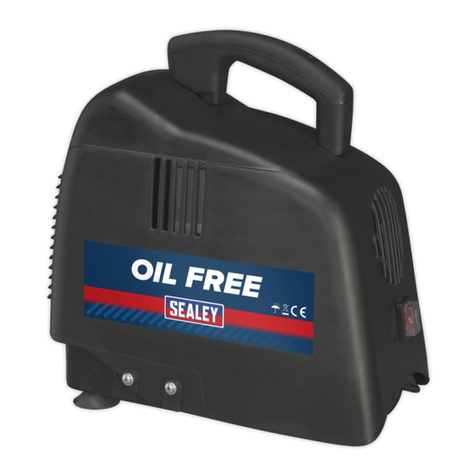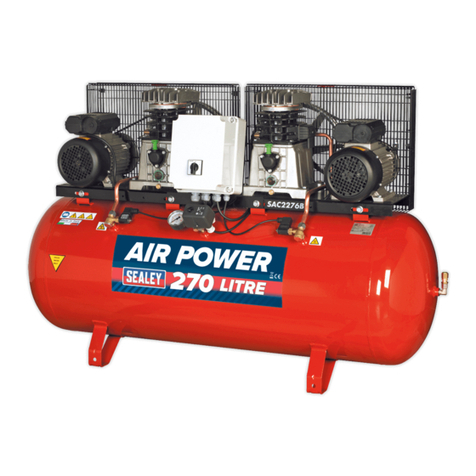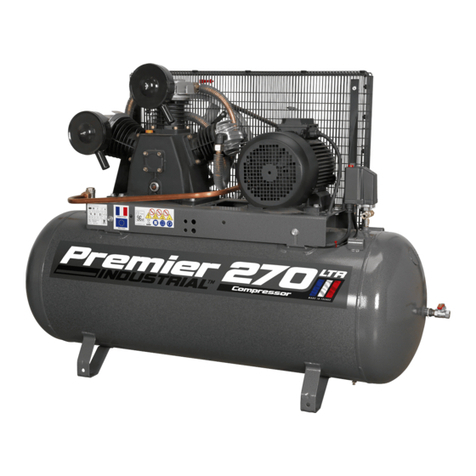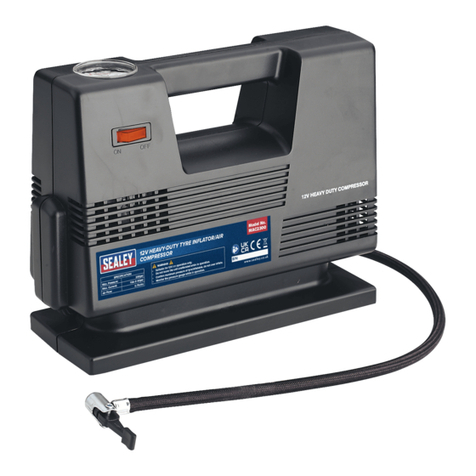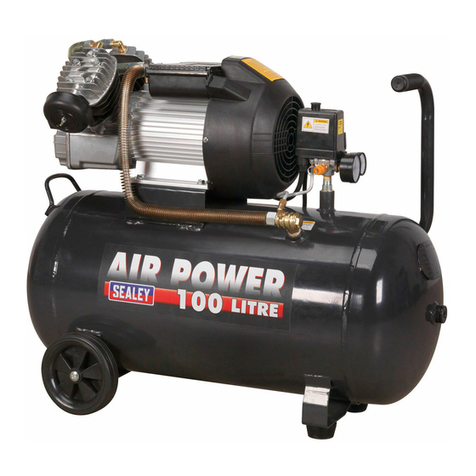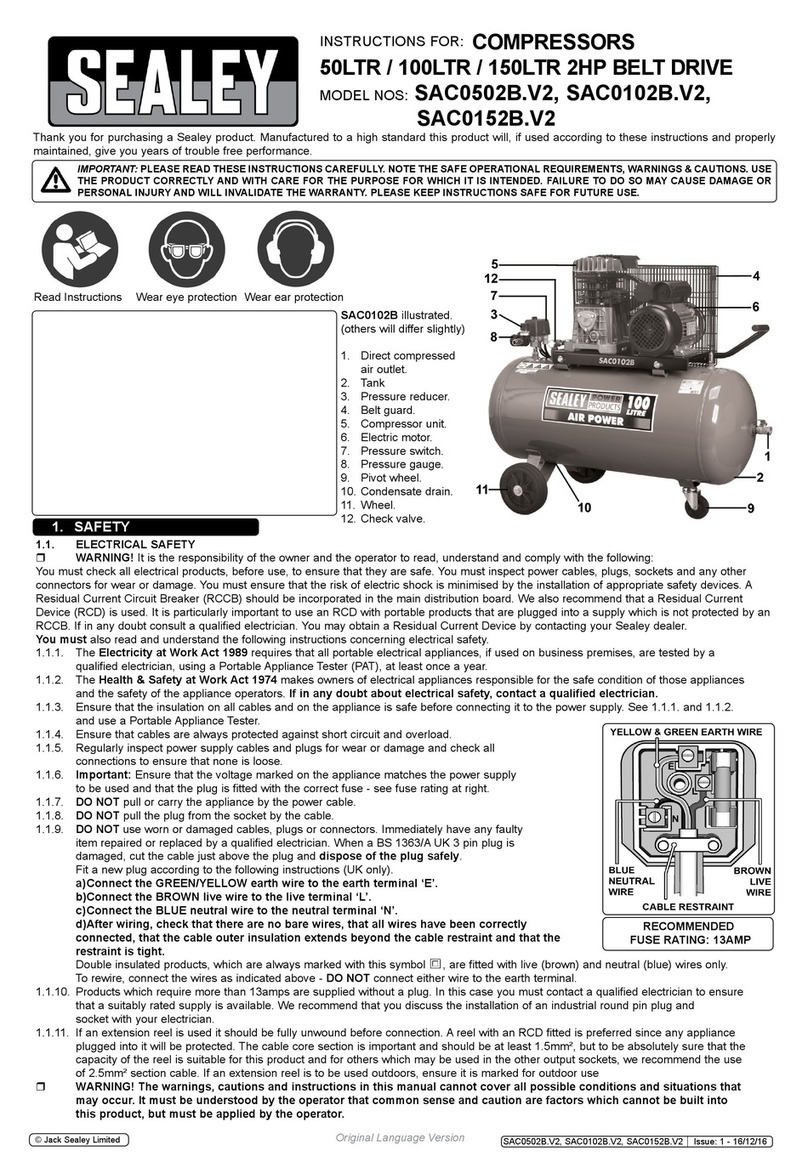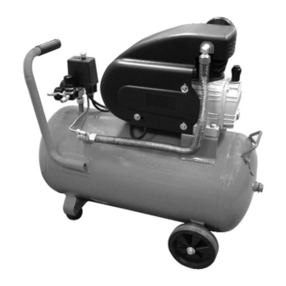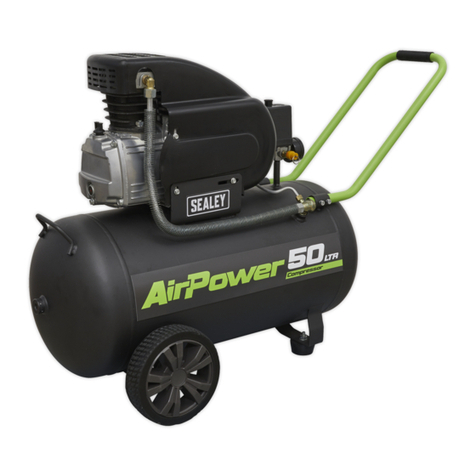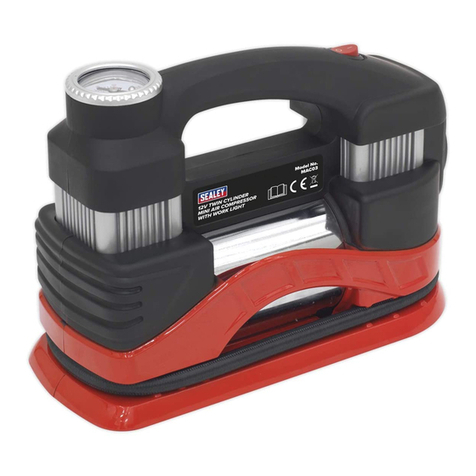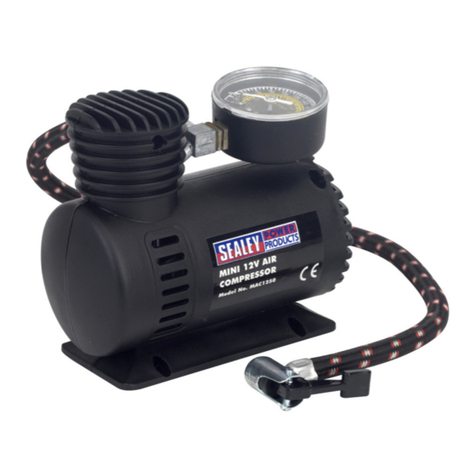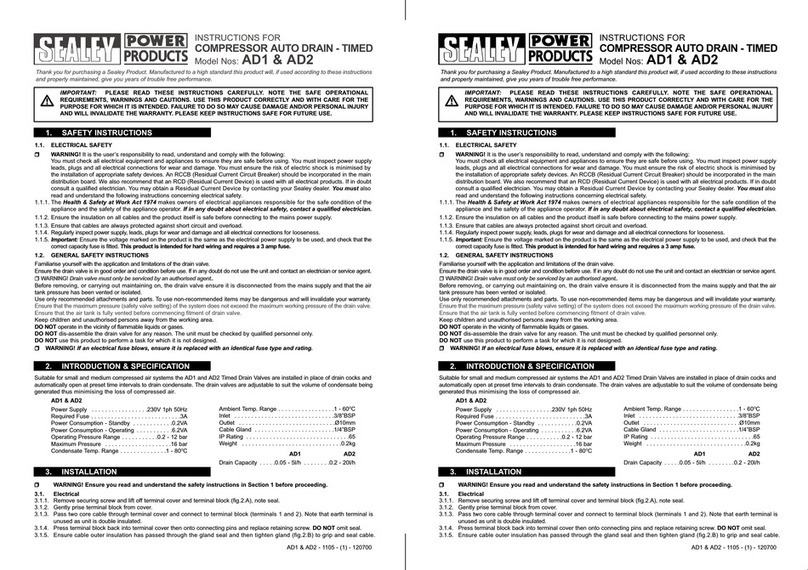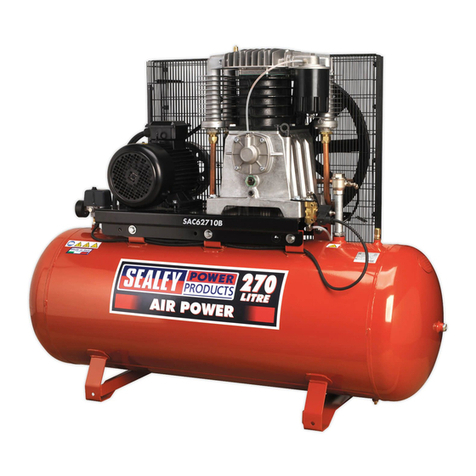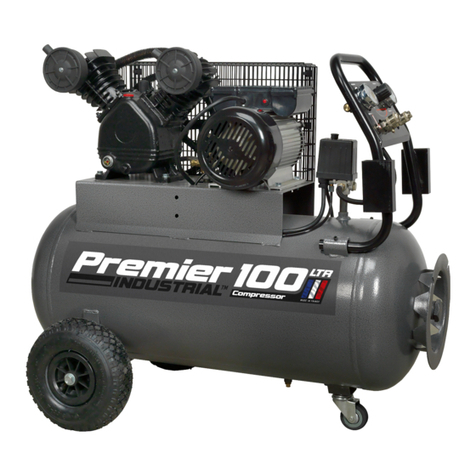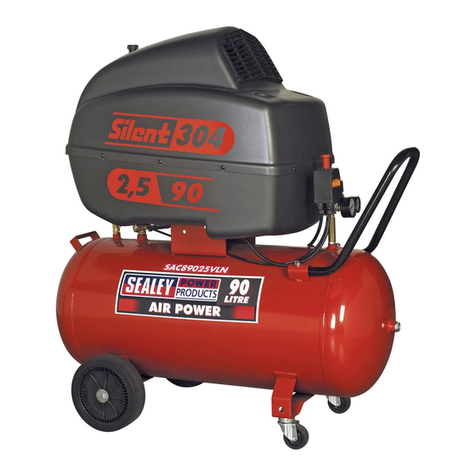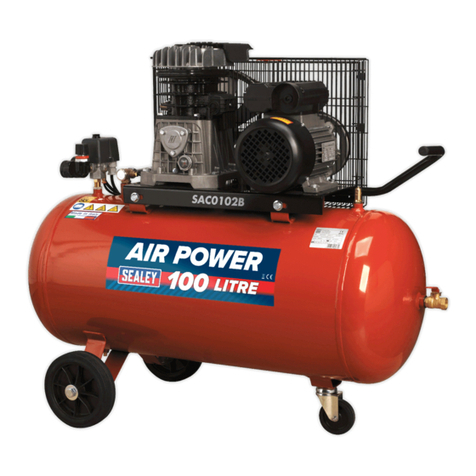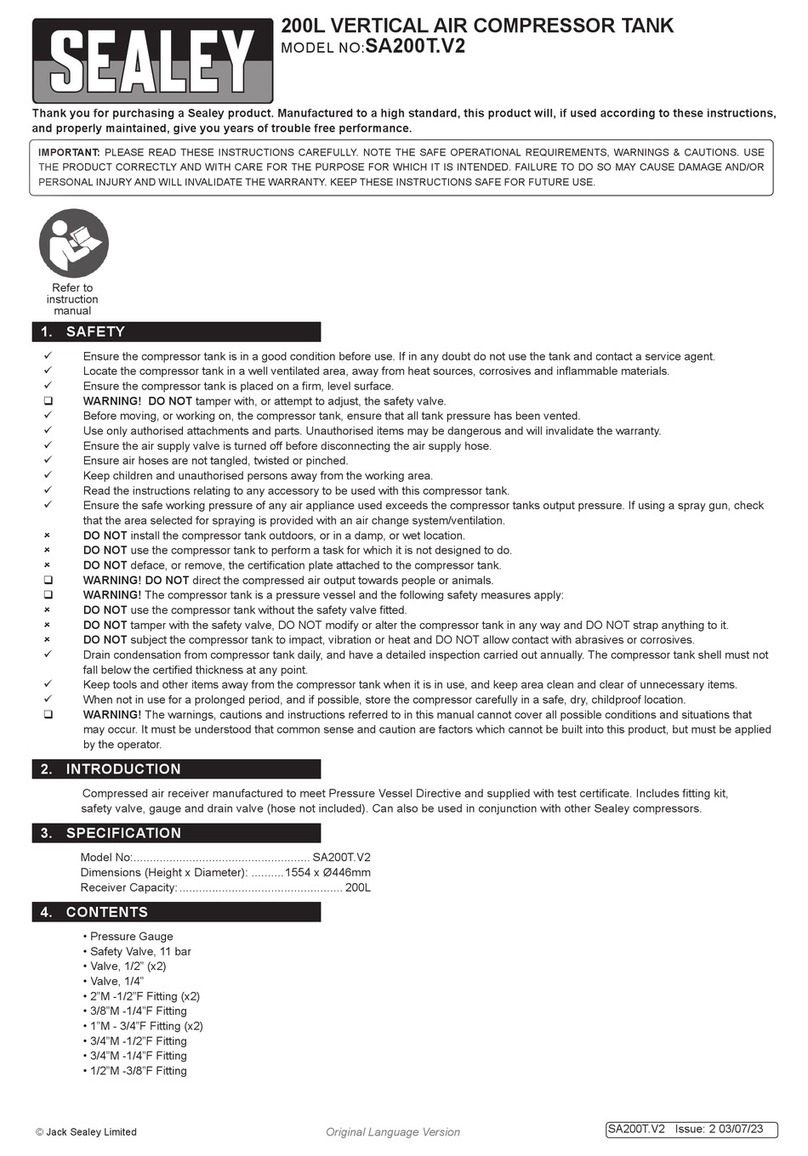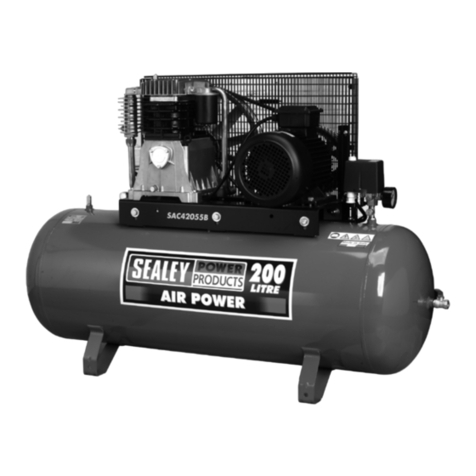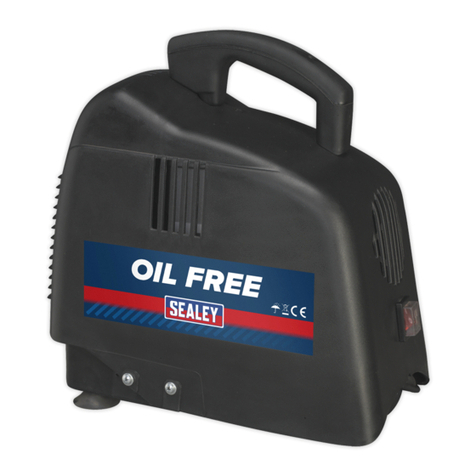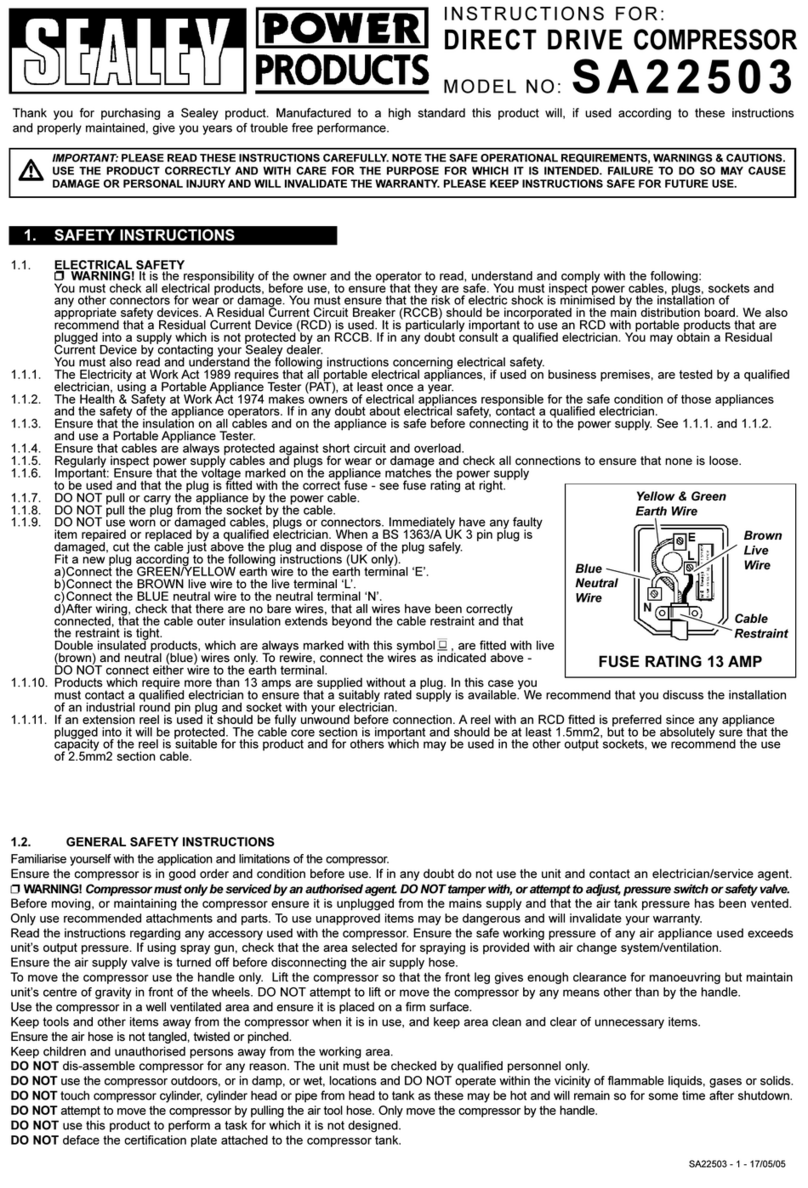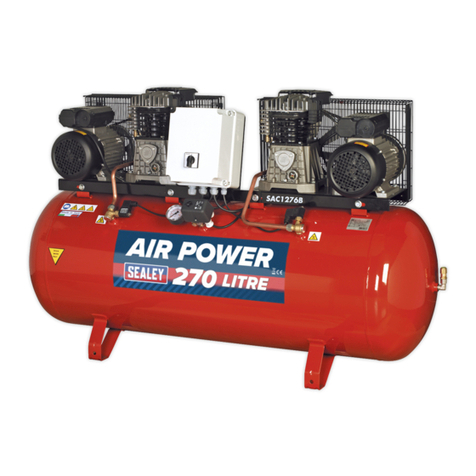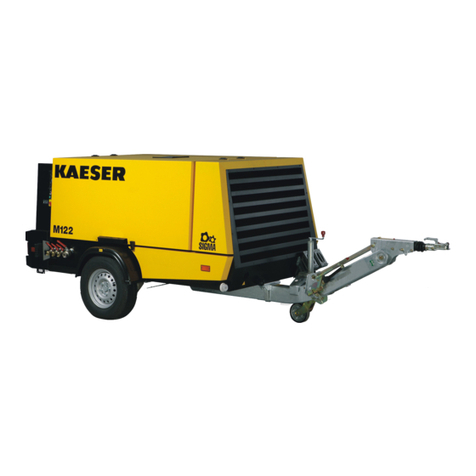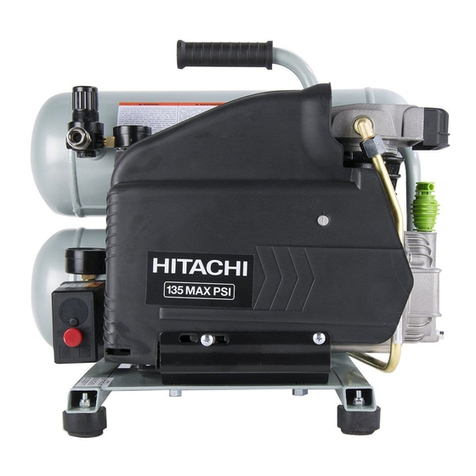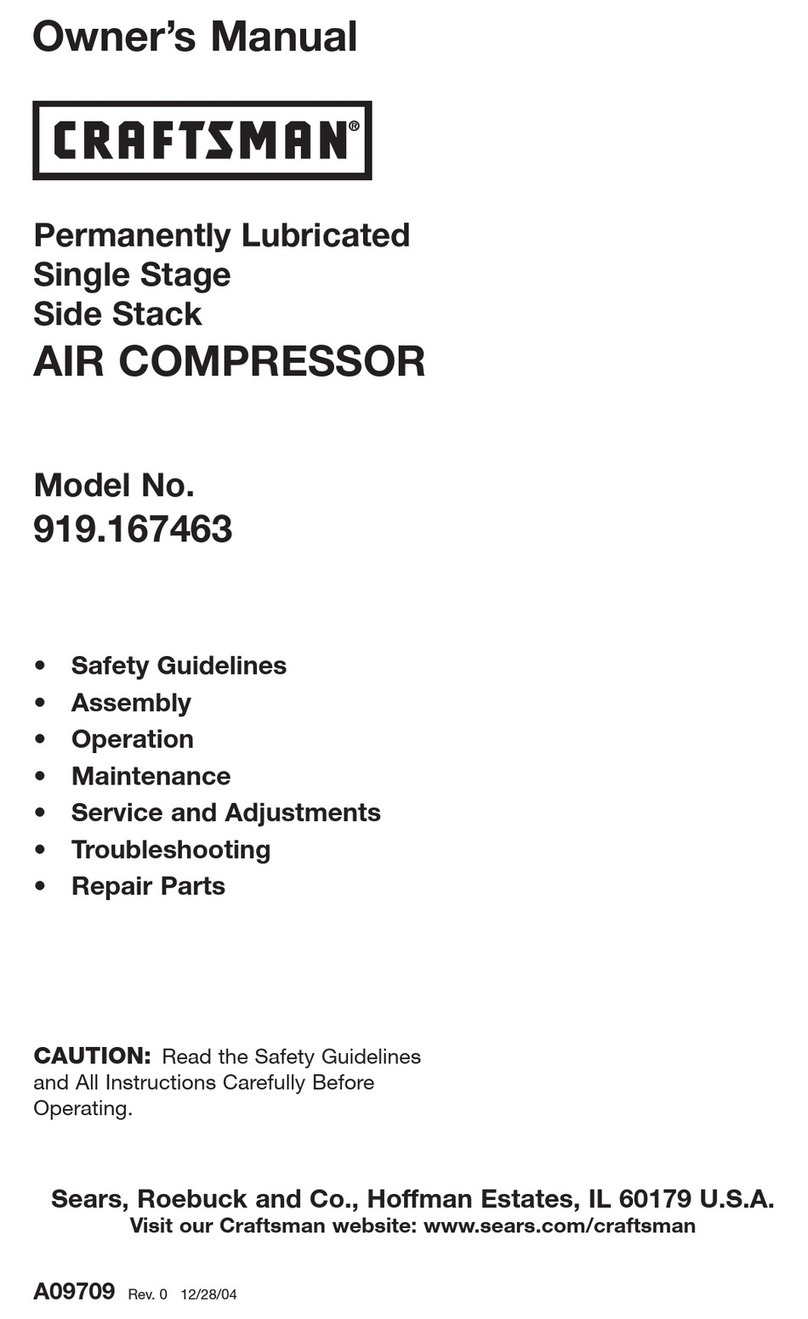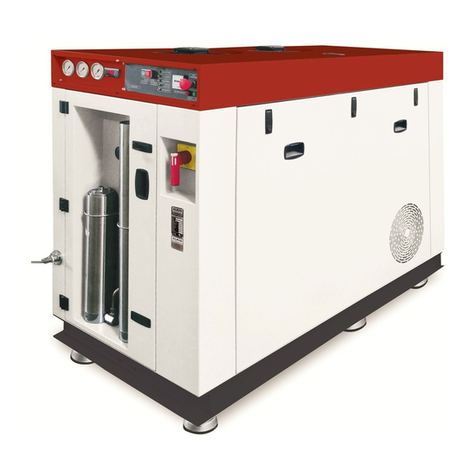
IMPORTANT
a. The motor on this compressor is 3HP/230V and at normal mains voltage will start within the capacity of a 13 amp fused
circuit. Certain local conditions relating to electrical supply in the UK can result in the voltage varying between a low of 216
volts and a high of 253 volts and at such times the 13 amp fuse in the compressor plug may blow. This is normal
and is not a fault with the compressor. However if it happens regularly we recommend that you consult an electrician with
a view to installing a 30 amp supply, with contact breaker, to avoid the inconvenience of frequent fuse replacement.
If using with an extension lead ensure cable size is at least 2.5mm2. Ensure cable is fully unwound.
b. Take care when selecting tools for use with the compressor. Air tool manufacturers normally express the volume of air
required to operate a tool in cubic feet per minute (cfm). This refers to free air delivered by the compressor (‘air out’) which
varies according to the pressure setting. Do not confuse this with the compressor displacement which is the air taken in by
the compressor (‘air in’). ‘Air out’ is always less than ‘air in’ and so it is important that, before choosing equipment, you
study the ‘Free Air Delivery’ figures shown in Specifications, Section 2.
WARNING! Ensure that you have read, understood and apply Section 1 safety instructions.
4.1. Ensure the ‘On/Off’ switch (fig.3.1) is in ‘Off’ position and the tank drain valve (fig.5) is closed.
4.2. Plug the lead into mains supply and start the compressor by pulling the ‘On/Off’ switch.
4.3. When starting the compressor for the first time, leave it running with air outlets (fig.3.5 & 6)
closed and regulator (fig.3.4) set to maximum pressure. Make sure that pressure in the tank
rises and that the compressor stops automatically when the max. pressure value allowed -
written on the plate and shown on the gauges (fig.3.2 & 3) - is achieved.
The compressor will now operate automatically. The pressure switch stops the motor when
the maximum tank pressure is reached and restarts it when pressure falls below the minimum
threshold - approx. 2 bar (29psi) less than the maximum pressure.
4.4. Stop the compressor by pushing the ‘On/Off’ switch (fig.3.1). The compressed air inside the
compressor head will flow out, making the restart easier and preventing the motor from being
damaged.
DO NOT, other than in an emergency,stop the compressor by switching off the mains socket, or
by pulling the plug out, as the pressure relief will not then occur and motor damage may result upon restart.
When the compressor runs correctly and is stopped correctly there will be:
(a) a whistle of compressed air when the motor stops and
(b) a protracted whistle (about 20-25 seconds) when the compressor starts with no pressure in the tank.
4.5. The compressor is equipped with an overload cut-out to protect the motor to gain access remove the back or
front panel of the compressor. The manual reset button (fig.4.X)
should not be operated until 3 minutes after cut-out, to allow the motor to cool. To restart, push
‘On/Off’ switch off, press the appropriate reset button and then pull ‘On/Off’ switch on. If, after restarting, the
compressor again automatically cuts out turn off and contact Service Agent.
4.6. The unregulated output from connector ‘A’ (fig.3.6) is intended to supply an external air tank. The pressure of this supply is shown on
gauge ‘A’ (fig.3.2).
4.7. The output from connector ‘B’ (fig.3.5) is regulated by the pressure regulator (fig.3.4) and is intended to supply air powered equipment.
The supply pressure is shown on gauge ‘B’ (fig.3.3). Pull and turn the regulator knob clockwise to increase pressure, anticlockwise to
reduce - push knob in to lock in required position. To determine the correct output pressure for any piece of equipment check the
manual supplied with it. When the compressor is not being used set the regulated pressure to zero so as to
avoid damaging the pressure regulator.
NOTE: a) If the motor does not cut in and out, but runs continuously when supplying an air appliance, the capacity of the compressor may be
insufficient for the appliance.
b) Should the pressure in the tank exceed the pressure switch maximum, a safety valve will activate. WARNING! For this reason
DO NOT tamper with, or adjust, the switch or safety valve.
4. OPERATION
In order to keep the compressor in good working condition, periodic maintenance is essential.
IMPORTANT! Failure to carry out maintenance tasks may invalidate the warranty on your compressor.
WARNING! Before performing any maintenance operation, switch off compressor, disconnect
from power supply and vent air from tank. Remove front and rear panels to provide access and
light.
5.1. After the first 50 working hours. Operations to be carried out:
a) Check that all bolts/nuts are tight, particularly those retaining the crank case and cylinder head.
b) Check oil level. Correct level is mid-way up sight glass (fig.6.C).
5.2. Daily. Operation to be carried out :
a) Drain condensation by opening the valve (fig.5.X) located under the tank.
5.3. Monthly (or more frequently, if the compressor operates in a very dusty atmosphere):
a) Check oil level and, if necessary, top up.
b) Remove the air filter element and clean by blowing through from the clean side, with an air line at low pressure.
Do not operate compressor without filter as foreign bodies or dust could damage the pump.
To access filter remove air hose from base of filter housing, undo wing nut located inside filter neck and
lower bottom section of housing.
c) Check belt tension.
d) Check for oil leaks.
e) Check safety valve. Pull ring to open valve, confirm air escapes. Release ring and confirm valve seals.
f) Check separator bowl and drain if necessary. Separator is behind and to the left of gauge ‘A’ (fig.3.2).
5.4. 3-monthly. Operation to be carried out a) Check tank for internal corrosion.
5.5. Every 500 hours. Operations to be carried out :
a) Change air filter element.
b) Check the automatic cut-out at max. pressure and the automatic cut-in at 2 bar below.
5. MAINTENANCE
fig. 3
fig. 4
fig. 5
fig. 6
Original Language Version SA4025/3.V3 Issue: 2 - 21/10/09
